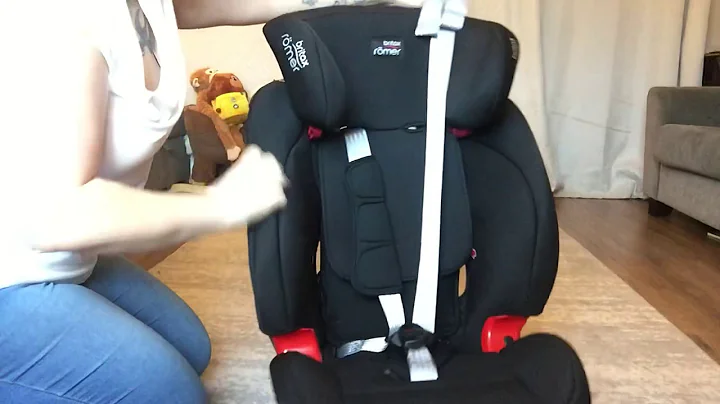Prevent Overheating! Learn How to Burp a Cooling System to Remove Air Pockets
Table of Contents:
I. Introduction
II. The Importance of Burping or Bleeding a Cooling System
III. Simple Method for Burping a Cooling System
IV. More Complex Methods for Burping a Cooling System
V. Using a Funnel System for Burping a Cooling System
VI. Difficult Vehicles and Challenging Air Pockets
VII. Using an Air Lift System for Burping a Cooling System
VIII. Monitoring the Coolant Level and Temperature
IX. Troubleshooting Tips for Air Pockets in the Cooling System
X. Conclusion
Introduction
Overheating can be a frustrating problem for car and truck owners, especially after working on the cooling system. When air pockets form in the system, it hinders proper coolant circulation and can lead to engine damage. Burping or bleeding the cooling system is a crucial step in ensuring optimal performance and preventing overheating. In this article, we will explore various methods and tips for effectively removing air pockets from the cooling system.
The Importance of Burping or Bleeding a Cooling System
⚙️
Before diving into the methods, let's understand why burping or bleeding a cooling system is necessary. When working on the cooling system, such as replacing a radiator, water pump, or thermostat, air pockets can form. These air pockets obstruct the proper flow of coolant, resulting in inadequate engine cooling. To prevent potential overheating and engine damage, it is crucial to remove these air pockets and ensure the system is filled with coolant and free from air.
Simple Method for Burping a Cooling System
⚙️
Some vehicles have a straightforward burping process that involves adding coolant, starting the engine, and allowing it to run for around 10 minutes. During this time, the thermostat opens and helps release any trapped air. Once the engine has cooled down, the coolant levels can be topped off. However, this method does not apply to all vehicles and may require additional steps.
More Complex Methods for Burping a Cooling System
⚙️
Certain vehicles may have a radiator cap directly attached to the radiator, making it easy to fill the radiator. Others may have a separate expansion tank or reservoir with a cooling cap. Regardless of the system, some vehicles are more challenging to fill properly. In such cases, adding coolant directly into the reservoir or radiator might not be sufficient. It is essential to follow the vehicle's specific guidelines and ensure the correct 50/50 coolant mix is used.
Using a Funnel System for Burping a Cooling System
⚙️
In situations where the conventional coolant addition method proves ineffective, a funnel system can be used. This system, which attaches to the coolant inlet, allows for a higher coolant fill level without spilling. By filling the funnel completely and running the engine, air pockets can be efficiently removed from the cooling system. Bubbles will be visible in the funnel, indicating the burping process is working effectively.
Difficult Vehicles and Challenging Air Pockets
⚙️
Some vehicles present unique challenges in burping the cooling system, especially those with rear-engine layouts and front-mounted radiators. In these extreme cases, air pockets can hide in various hard-to-reach areas, impeding the proper functioning of the cooling system. Additional tools and techniques may be necessary to remove these stubborn air pockets effectively.
Using an Air Lift System for Burping a Cooling System
⚙️
To address the most challenging air pockets, an air lift system can be employed. This tool applies a vacuum to the entire cooling system, creating a negative pressure environment. By extracting the air and allowing coolant to fill the system, air pockets can be eliminated effectively. This method is particularly useful for complex cooling system configurations and stubborn air pockets that resist other techniques.
Monitoring the Coolant Level and Temperature
⚙️
After burping the cooling system, it is crucial to monitor the coolant level and temperature. Running the engine for approximately 10 minutes helps the thermostat open, allowing proper coolant flow. Keeping an eye on the temperature gauge during this process is essential. If the temperature exceeds the normal operating range, the vehicle should be shut down. Additionally, revving the engine slightly can aid in burping any remaining air pockets.
Troubleshooting Tips for Air Pockets in the Cooling System
⚙️
If there are still air pockets present after burping the cooling system, troubleshooting may be required. One common issue is when the temperature rises, but no hot air is coming out of the vents. This indicates the presence of air pockets that need to be addressed. Ensuring proper installation of the thermostat and checking for any holes or backward placement can prevent these problems.
Conclusion
⚙️
Properly burping or bleeding the cooling system is crucial to maintain the optimal performance of a vehicle's engine. By following the appropriate methods and techniques, air pockets can be effectively eliminated, ensuring proper coolant circulation and preventing overheating. Remember to monitor the coolant level, temperature, and airflow to troubleshoot any persisting issues. With these steps, you can confidently tackle cooling system maintenance and keep your vehicle running smoothly.
Highlights:
- Understanding the importance of burping or bleeding a cooling system
- Simple method for burping a cooling system
- More complex methods for challenging vehicles
- Using a funnel system for efficient burping
- Addressing difficult vehicles and air pockets
- Employing an air lift system for stubborn air pockets
- Monitoring coolant levels and temperature
- Troubleshooting tips for persisting air pockets
FAQ:
Q: Why is burping or bleeding a cooling system important?
A: Burping or bleeding a cooling system is essential to remove air pockets that can hinder proper coolant circulation, leading to overheating and potential engine damage.
Q: How do I burp a cooling system?
A: The process can vary depending on the vehicle, but a simple method involves adding coolant, running the engine for about 10 minutes, and then topping off the coolant levels once the system has cooled down.
Q: What if the simple burping method doesn't work?
A: For more complex vehicles, using a funnel system, employing an air lift system, or following specific guidelines provided by the manufacturer may be necessary.
Q: Can air pockets cause overheating even after burping the system?
A: Yes, if there are still air pockets present, the coolant may not circulate properly, resulting in inefficient cooling and potential overheating.
Q: How can I troubleshoot air pocket issues in the cooling system?
A: Checking the thermostat installation, ensuring there are no holes or backward placement, and monitoring the temperature and airflow can help troubleshoot and address persisting air pocket issues.
Resources:
- [Link to manufacturer's website for specific vehicle coolant guidelines]







